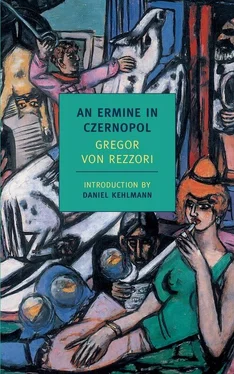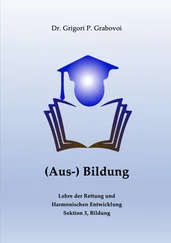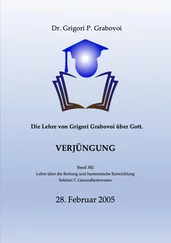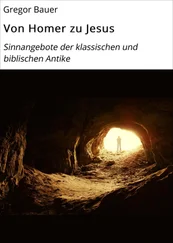Once again Herr Alexianu made an artful pause, but it was impossible to tell if this one, too, was for rhetorical reasons or whether his mind was straining to grasp the full profundity of this discovery. He had taken the pointed end of the heavy sewing shears, which we were not allowed to play with — ostensibly because they belonged to Fräulein Iliuţ, but in reality because they were too dangerous for us — and was keeping time, striking the broad looped handle against his left palm, as though to prolong the swordsman-like thrust of his, or rather Herr Năstase’s, pronouncements, even beyond the silence. We found him exceedingly dislikable, but the somber glow with which he so ardently conveyed the mental capers of another person won us over, as if they were bound to inspire everyone the same way they did him. Despite his ponderous pronouncements and ludicrous seriousness, which we clearly recognized, without fully understanding what he was saying, because with heads buzzing from the bewildering, Volapük-like jargon, we paid that much more attention to his facial expressions and his gestures, and these brought us much closer to the true content of his words than if we’d succeeded in following the abstruse train of thought — yes, despite this ungainliness there was something that secretly moved us, perhaps because it was something with which we could identify: the fire of unconditional admiration. But we also perceived something phony, even creepy — what Herr Tarangolian would have called the perils of the proselyte. Today I’d like to think that back then I figured out one of the processes that contribute to our great spiritual tragedy: namely that no thought can be effective without expending a measure of unspent energy, and as a result no thought can ever be conveyed in pristine form. Of course this happened unconsciously and completely by coincidence — in this case all because of the nickname we bestowed on Herr Alexianu — Ali. And whoever it was that came up with the moniker “son-in-law of the prophet” had, with the amazing intuition that makes children seem like geniuses, captured both the disciple-like nature of his being as well as the second-rate nature of the disciple. Even many years later, when he came up in conversation, and someone remarked that Herr Alexianu wore a halo made of iron, that was an amusing and fit metaphor — but what really stuck was that particular nickname.
“Năstase has undertaken to cleanse the Christian view of love of its heathen elements,” the son-in-law of the prophet continued. “His thesis is that Christianity has yet to be perfected. It calls itself the religion of love. But in order for this to be true in a new sense, it has to eliminate all vestiges of heathen views of love — and there are myriads of them. In their craving for political power, the Church elders wanted to reconcile the legacy of the past with the exigencies of the present, and as a result Christianity became the most complex religion around. It needs to be reformed, and this requires a resolute and unambiguous reframing. But Năstase has no intention of devoting himself to that particular task. He says that to be convincing, you have to swing the club of the plebeian. ‘The way I think, and the way I express things isn’t exactly popular. So I’ll leave that to you’—by which he means me, as the editor-in-chief of our journal. He himself plans to take an advisory role. A critique of Christianity will be at the top of our agenda. Imagine the daring, the audacity of such an undertaking. I’m not referring to the difficulty involved. Năstase is by no means a specialist, but he has a broad, comprehensive education, and whatever specific training he may lack is more than made up for by his mental acuity and his enormous powers of comprehension. But we will have to contend with all Christian denominations, who will close ranks against us. Because what we are espousing strikes at the root of their teachings and creeds that have turned to dogma. Religious scholars, for example, will be arguing to the point of irreconcilable hatred over Năstase’s views on the Mother of God — which he sees as a figure of heathen origin representing a parthogenetically renewable capacity for love, a pagan symbol that has no place in Christianity. The latest scholarly results support our theory. It’s long been known that Mary was not originally accorded the significance that the Church later bestowed on her — a fact clearly demonstrated by the Savior’s utterance: Woman, what have I to do with thee! Archaeology has uncovered some provocative correspondences between this figure and the prehistoric mother-goddesses of the matriarchal societies around the Mediterranean, including a number of symbolic details: cross, snake, crescent moon, star diadem, lilies, the blue cape, the child cradled in arms. But as Năstase says, let’s leave that type of proof to the scientific bookkeepers. He offers an alternative to this heathen view of love, with its mother-of-God worship. He takes the Christian injunction Love thy neighbor as thyself and gives it a new meaning, or rather, he restores its original meaning. He considers the statement inherently ironic: after all, Jesus was a rabbi. It’s in keeping with the tangled Jewish tradition of thought not to state a basic principle directly as an axiom, but rather to pose it as a mental problem. The solution is usually surprisingly simple. This unexpected mental shortcut is what produces the irony, the joke. Năstase interprets the command like this: You know that love, which helps attain happiness, is something good. Therefore create in your neighbor that which can make him equally happy; lead him to the happiness of love. More simply put: Do not love so much as act so that you will be loved. ”
Herr Alexianu rapped the handle of the shears hard against his left palm and closed his fingers around it so tightly that his knuckles turned white. His cheek muscles contracted and released.
“Christianity, you see — and I mean the original, unspoiled version — is essentially a male religion, as we can see in the apostle Paul’s hostility toward marriage. This rejection of the feminine was not, as people assume, a product of the apocalyptic mentality of the era; it comes from a moral-aesthetic system of values that ranks acting above suffering , and therefore endorses whatever we might do —regardless of the motive — over what simply happens to befall us, for active doing is inevitably more character-building, more personality-strengthening, than passive receiving. Acting is masculine. But for women life is something that befalls them. Duns Scotus’s potuit, decuit, ergo fecit , which he offered as proof for the Immaculate Conception, speaks volumes. Her son the Mother of God befell : the loftiest symbol of the feminine. Anyone inclined to doubt the biological possibility of the fact is faced with God’s utmost masculinity: yes, he could do it, it was fitting, he did it. To act is divine; to suffer is earthly. What in us is divine, acts. This is our manly part. What is earthly in us, suffers. The earth is feminine.”
“So does that mean the Savior’s crucifixion wasn’t divine?” Fräulein Iliuţ dared ask.
Herr Alexianu gave a narrow smile. “I expected this objection. In fact you might say I even coaxed it out of you. The answer is obvious: No, Christ’s death, his enduring of death, was not divine; that was the human fate he took upon himself. But the metaphor goes further and deeper than that. He died out of love. And therefore his death must also be a symbol for love. Above all, his suffering. And that is the case. Because it is true that in love, acting and suffering are transposed. He who loves, suffers love. He who is loved, produces love — and therefore acts. Christ’s suffering contains a terrible warning.”
Читать дальше












